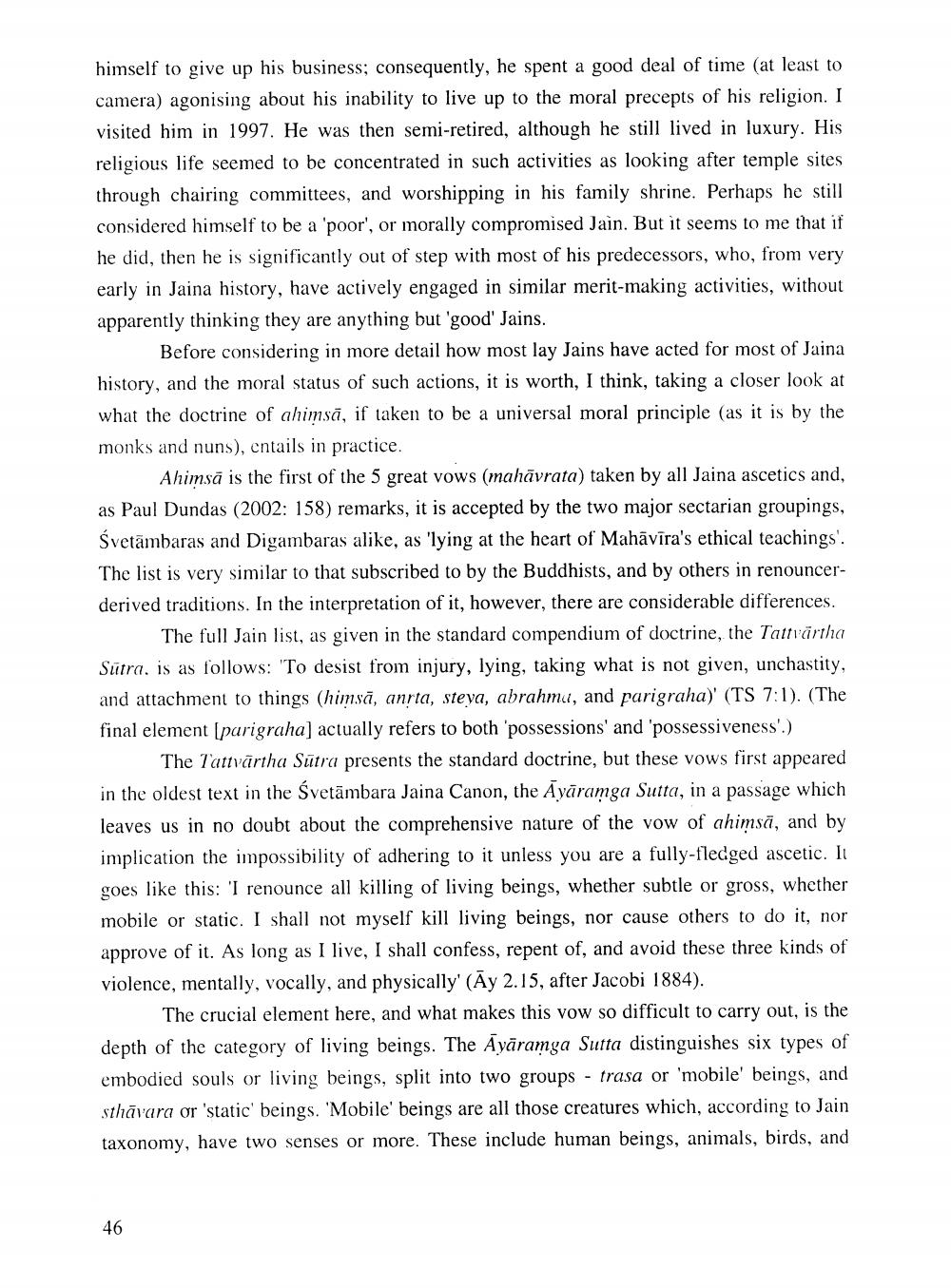________________
himself to give up his business; consequently, he spent a good deal of time (at least to camera) agonising about his inability to live up to the moral precepts of his religion. I visited him in 1997. He was then semi-retired, although he still lived in luxury. His religious life seemed to be concentrated in such activities as looking after temple sites through chairing committees, and worshipping in his family shrine. Perhaps he still considered himself to be a 'poor', or morally compromised Jain. But it seems to me that if he did, then he is significantly out of step with most of his predecessors, who, from very early in Jaina history, have actively engaged in similar merit-making activities, without apparently thinking they are anything but 'good' Jains.
Before considering in more detail how most lay Jains have acted for most of Jaina history, and the moral status of such actions, it is worth, I think, taking a closer look at what the doctrine of ahimsa, if taken to be a universal moral principle (as it is by the monks and nuns), entails in practice.
Ahimsa is the first of the 5 great vows (mahävrata) taken by all Jaina ascetics and, as Paul Dundas (2002: 158) remarks, it is accepted by the two major sectarian groupings, Svetämbaras and Digambaras alike, as 'lying at the heart of Mahavira's ethical teachings'.. The list is very similar to that subscribed to by the Buddhists, and by others in renouncerderived traditions. In the interpretation of it, however, there are considerable differences.
The full Jain list, as given in the standard compendium of doctrine, the Tattvärtha Sutra, is as follows: To desist from injury, lying, taking what is not given, unchastity, and attachment to things (himsä, anṛta, steya, abrahmu, and parigraha) (TS 7:1). (The final element [parigraha) actually refers to both 'possessions' and 'possessiveness'.)
The Tattvärtha Sutra presents the standard doctrine, but these vows first appeared in the oldest text in the Svetambara Jaina Canon, the Ayaramga Sutta, in a passage which leaves us in no doubt about the comprehensive nature of the vow of ahimsa, and by implication the impossibility of adhering to it unless you are a fully-fledged ascetic. It goes like this: I renounce all killing of living beings, whether subtle or gross, whether mobile or static. I shall not myself kill living beings, nor cause others to do it, nor approve of it. As long as I live, I shall confess, repent of, and avoid these three kinds of violence, mentally, vocally, and physically' (Ay 2.15, after Jacobi 1884).
The crucial element here, and what makes this vow so difficult to carry out, is the depth of the category of living beings. The Ayramga Sutta distinguishes six types of embodied souls or living beings, split into two groups trasa or 'mobile' beings, and sthavara or 'static' beings. 'Mobile' beings are all those creatures which, according to Jain taxonomy, have two senses or more. These include human beings, animals, birds, and
46




